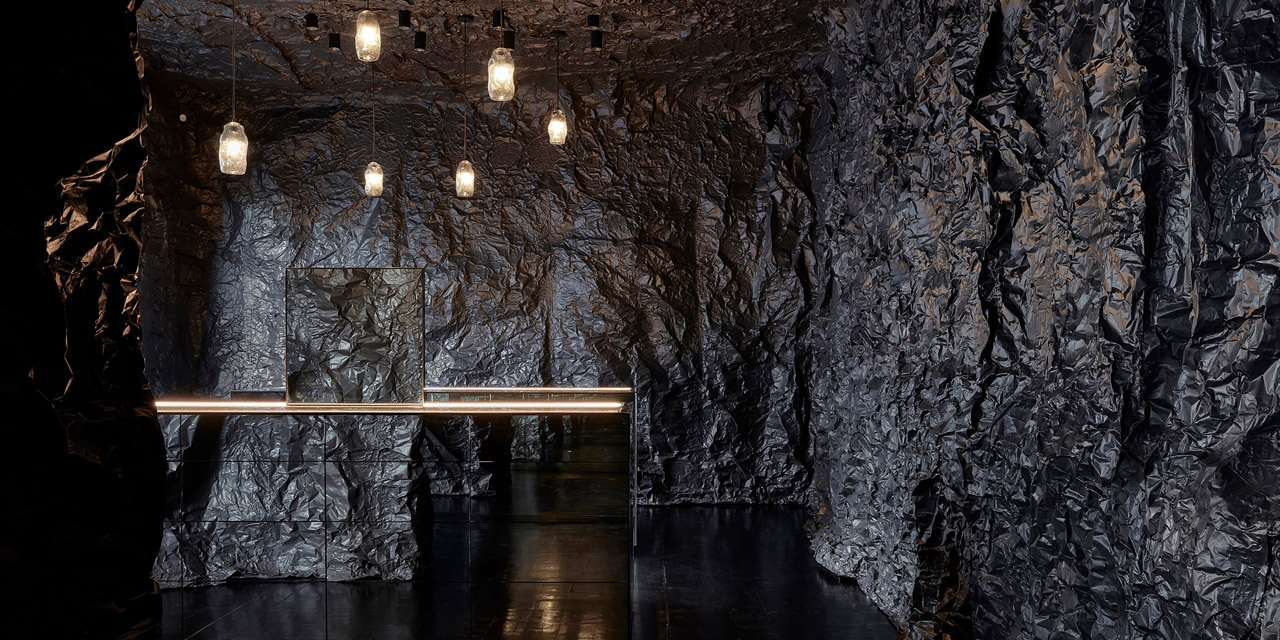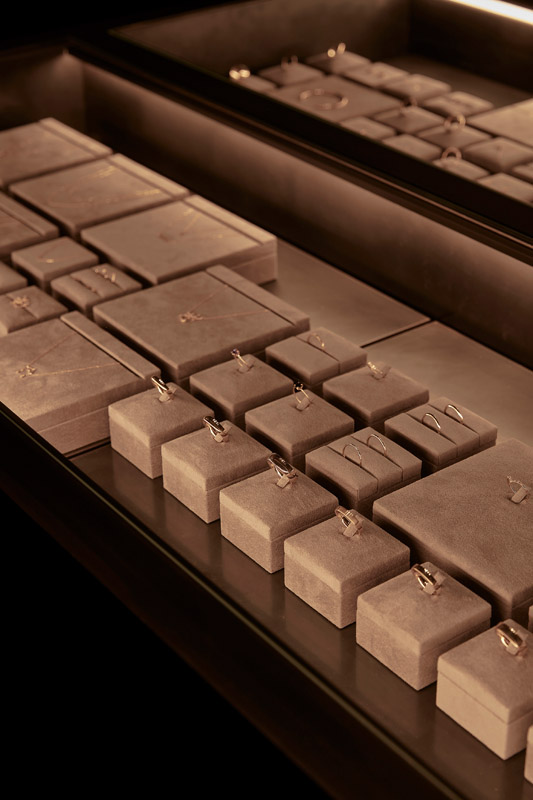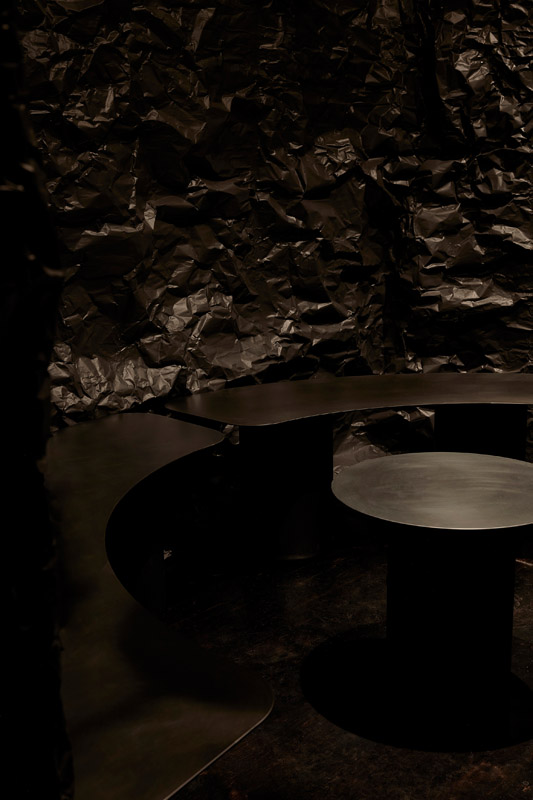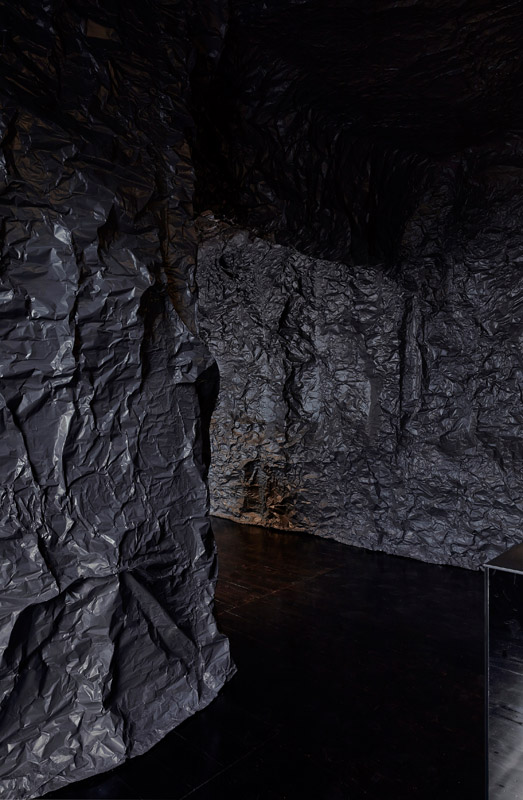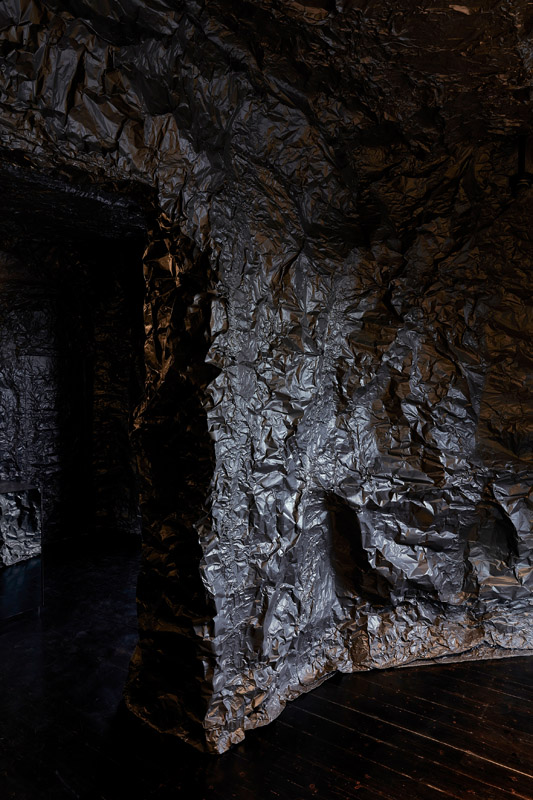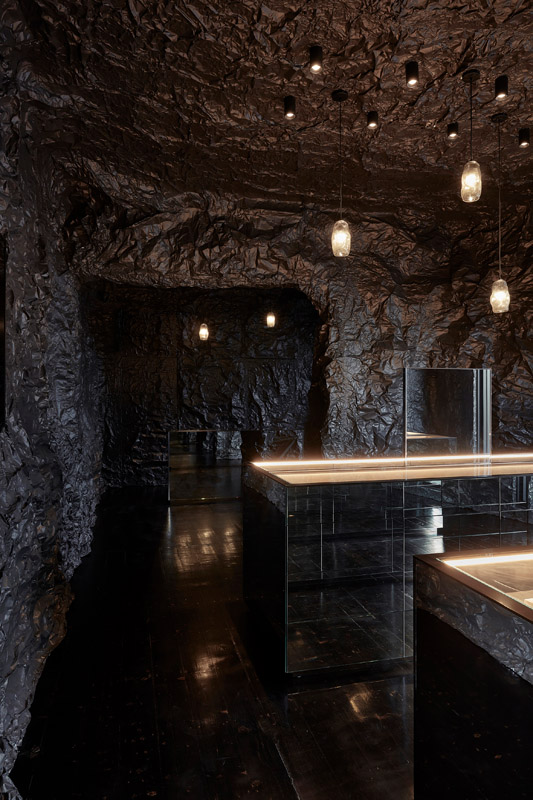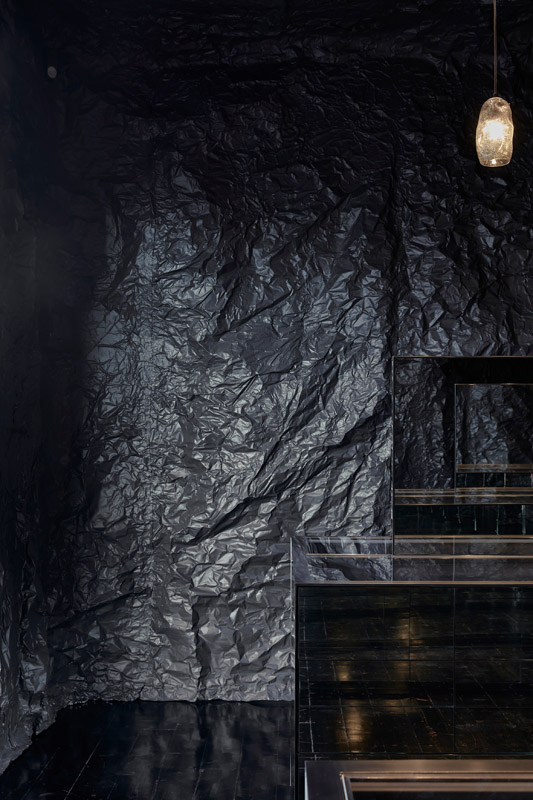The store was designed as an urban gesture and artwork, giving back to the street and the city of Melbourne. It is a retail space that is designed to prompt a sense of discovery, and through its use of biophilic design principles gently reminds the customer of larger issues to do with the fragility of our planet. It eschews trend based cyclical interior design usually associated with retail fitout, creating in a broader sense a place that is about connecting to humans. The product is displayed and viewed in meticulously detailed joinery elements, with lighting only on the product, and concealed magnetic locks operated by the consultants keeping the product secure, avoiding applied mechanisms that detract from the form the joinery element. It promotes a sense of exploration and creates an atmosphere of wonder in all who visit the project. Everything in this store was designed to enhance the experience.
“Even in the depths of the darkest oceans, some light always pierces through.” Naoshi Arakawa. A love letter to Melbourne.
Designed as a simple love letter to Melbourne as it emerges from a year of COVID-19 lockdowns, embodying this jewellery brand's fascination with the ocean, Sarah & Sebastian Armadale delicately echoes a quote by Naoshi Arakawa, “Even in the depths of the darkest oceans, some light always pierces through.”
Design Brief
Utilising a palette of black, in varying sheens and intensity, the store design creates a moody, immersive and playful experience where light can be focussed on even the smallest of elements.
The store is comprised of 3 simple mirrored forms housing jewellery displays & point of sale that are enveloped by an undulating cavelike landscape installation applied to the walls and ceiling. Flooring is black Japan stained timber in a satin finish, adding a level of depth and reflection to the spatial composition. Completing the space is a hidden consultation room for private jewellery discussions.
Lighting is kept direct on the jewellery pieces & hand blown smoke grey glass pendants with colour changing bulbs create colourful uplighting effects when the store is closed to amplify the store’s association with the ocean, a coral reef created by light is implied by this gesture.
This project was developed by:

